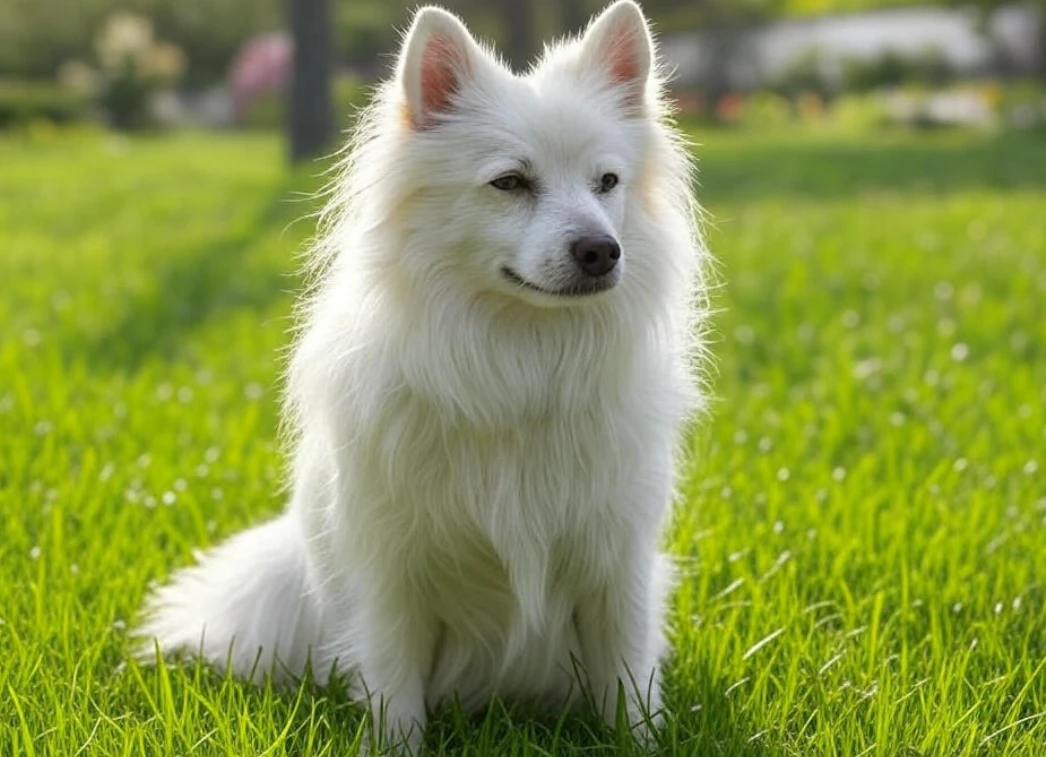
The American Eskimo Dog, or Eskie, is a picture of elegance wrapped in a thick, snowy-white coat, paired with a keen mind and boundless energy. Despite the Arctic-sounding name, these dogs have no actual connection to Eskimos or the Arctic. Instead, they descend from European Spitz breeds and were brought to America by German immigrants in the 1800s. The term “Eskimo” is believed to have originated from kennel branding, not geography.
This delightful companion, recognized officially by the American Kennel Club (AKC) in 1994, is known for its loyalty, intelligence, and zest for life. Whether living in a city apartment or a suburban home with a backyard, Eskies thrive when given attention, activity, and affection. These dogs form strong bonds with their families and shine when treated as a true member of the household.
Despite being small to medium-sized, the American Eskimo Dog carries itself with confidence and grace. There are three size variations: the Standard (15–20 inches tall and 15–40 lbs), the Miniature (12–15 inches and 10–20 lbs), and the Toy (9–12 inches and 5–10 lbs). Males tend to be on the larger end of the range. The breed features a well-proportioned, square body with a rounded skull, a wedge-shaped muzzle, and a deep chest with a tucked belly. Ears are small, triangular, and set high on the head, while the plumed tail curls proudly over the back, as expected from any self-respecting Spitz.
The breed’s signature look includes bright, almond-shaped brown eyes with a curious, fox-like expression. Occasionally, blue eyes may appear, though they are not typical. The coat is dense and double-layered, featuring longer guard hairs and a thick undercoat that protects against weather. Around the chest and shoulders, a lion-like mane adds to their noble look. The tail and hind legs are feathered, while the muzzle has shorter hair.
The AKC standard recognizes two coat color variations: pure white and white with biscuit cream accents. No other markings are accepted. With proper care, these dogs can live between 13 and 15 years, offering a long stretch of devoted companionship.
Eskies are known for their friendly and affectionate nature. They form tight bonds with their families, craving attention and social interaction. They don't fare well when left alone for extended periods and can develop separation anxiety. While suspicious of strangers, they are not aggressive by nature—more likely to bark than bite.
With children, Eskies are playful and patient, as long as they are treated respectfully. It’s important to teach kids proper dog etiquette, as these dogs won’t tolerate ear-pulling or roughhousing. Early education and boundaries for both child and dog ensure peaceful coexistence.
Their social charm extends to other animals as well. American Eskimo Dogs usually get along with household pets and show minimal interest in dog-on-dog rivalry. Their sociable nature makes them a wonderful choice for families with other pets.
Training an Eskie is a rewarding task. These dogs respond well to positive reinforcement techniques—treats, praise, and affection. While intelligent, they can also be independent and occasionally stubborn. That’s why early socialization and consistent leadership are crucial. Owners must earn respect through patience, not force. Classes should be playful and engaging, with short sessions that prevent boredom. Introducing the dog to new sights, sounds, and situations from puppyhood will help it grow into a confident adult.
Though Eskies are lively, they do well in various living situations, including small city apartments, provided they get ample exercise. This is not a breed that enjoys being confined or chained outside. A walk around the block won’t cut it—these dogs need a chance to run, play, and stretch their minds. Fetch, agility courses, and puzzle toys are all excellent options. If you have a backyard, let your Eskie enjoy supervised off-leash time and engage in active games.
Their bright white coat may look glamorous, but it requires effort to keep clean—especially in wet or muddy weather. Investing in a light waterproof dog jacket for rainy days can help reduce post-walk cleanup. Regular grooming is key to keeping their coat beautiful and healthy.
American Eskimo Dogs do well on both premium-quality commercial dog food and home-prepared diets. When choosing a natural feeding plan, prioritize lean meats, whole grains, and vegetables. Protein should make up at least 50% of the meal by weight. Supplementing with vitamins is essential if you choose not to feed pre-made kibble, which usually contains essential nutrients.
Avoid fatty or processed human foods like deli meats, sweets, and fried items. These can lead to digestive upset or long-term health issues.
Portion control is important, especially for the smaller Miniature and Toy variations. Feed your Eskie twice a day to maintain stable energy levels and avoid overeating. Always ensure clean, fresh water is available.
Though not as widely seen today as in the past, the American Eskimo Dog remains a hidden gem among Spitz-type breeds. Ranked 123rd in AKC registrations as of 2022, the Eskie still enjoys a dedicated fan base. Puppies are generally affordable, with non-pedigree prices ranging from $600 to $800. Dogs from reputable breeders with show-quality lineage may cost significantly more.
If you’re seeking a dog that’s as beautiful as it is brilliant—one that thrives on companionship, thrives in training, and brings pure joy to everyday life—the American Eskimo Dog may be your perfect match.